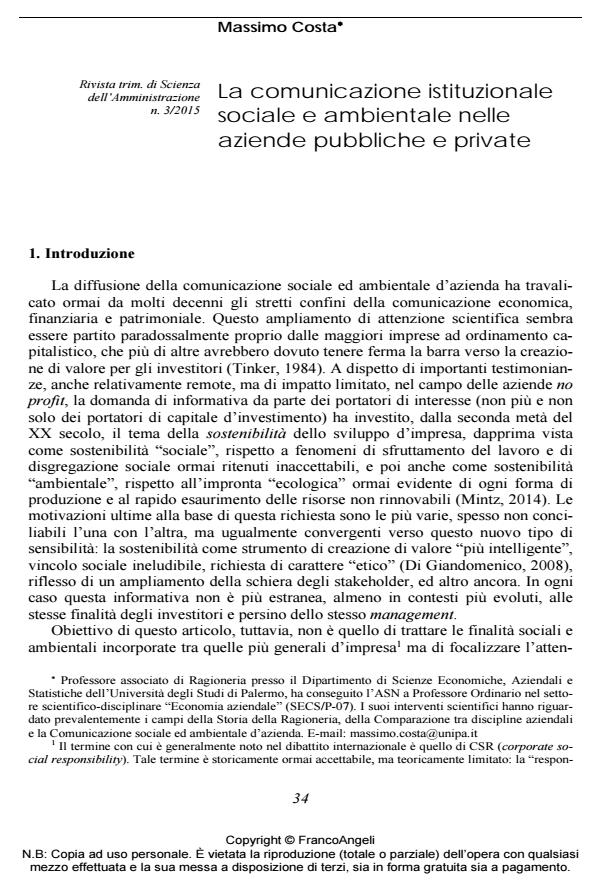Social and Environmental Communication in Private and Public Entities
Journal title RIVISTA TRIMESTRALE DI SCIENZA DELL’AMMINISTRAZIONE
Author/s Massimo Costa
Publishing Year 2015 Issue 2015/3
Language Italian Pages 19 P. 34-52 File size 102 KB
DOI 10.3280/SA2015-003003
DOI is like a bar code for intellectual property: to have more infomation
click here
Below, you can see the article first page
If you want to buy this article in PDF format, you can do it, following the instructions to buy download credits

FrancoAngeli is member of Publishers International Linking Association, Inc (PILA), a not-for-profit association which run the CrossRef service enabling links to and from online scholarly content.
Object of this article is the institutional external disclosure for every kind of concerns (not only businesses), including every kind of information that goes beyond the strict financial domain. The paper deals, specifically, with social disclosure, when the involved variables are of human and social nature, be them expressed in monetary terms or not, and with environmental disclosure, when the involved variables are of physical-natural nature. According to the most recent research developments, the theme of integrated disclosure is dealt with as well, in the two aforementioned dimensions, even with a normative proposal by the author. A basic choice is the privileged reference to the entity and not to the firm or corporate. Thus, it is chosen a "generalistic" approach, according whom the common characters for every kind of entity will be exposed before, afterwards the variance between public and private "world", and, inside this last one, between no profit and for profit organizations. Another followed approach will be the historical reconstruction of the two main reports (respectively, "social" and "environmental") along the last decades, both read as a progressive answer to a demand for social/environmental disclosure by a social context, which enhances its sensitivity to these themes day by day.
Keywords: Social communication - environmental communication - private and public entities
- The lever for innovation in the business model: Information systems in the fashion industry Giuseppina Iacoviello, Arianna Lazzini, in Corporate Ownership and Control /2017 pp.202
DOI: 10.22495/cocv14i2c1p6
Massimo Costa, La comunicazione istituzionale sociale e ambientale nelle aziende pubbliche e private in "RIVISTA TRIMESTRALE DI SCIENZA DELL’AMMINISTRAZIONE" 3/2015, pp 34-52, DOI: 10.3280/SA2015-003003